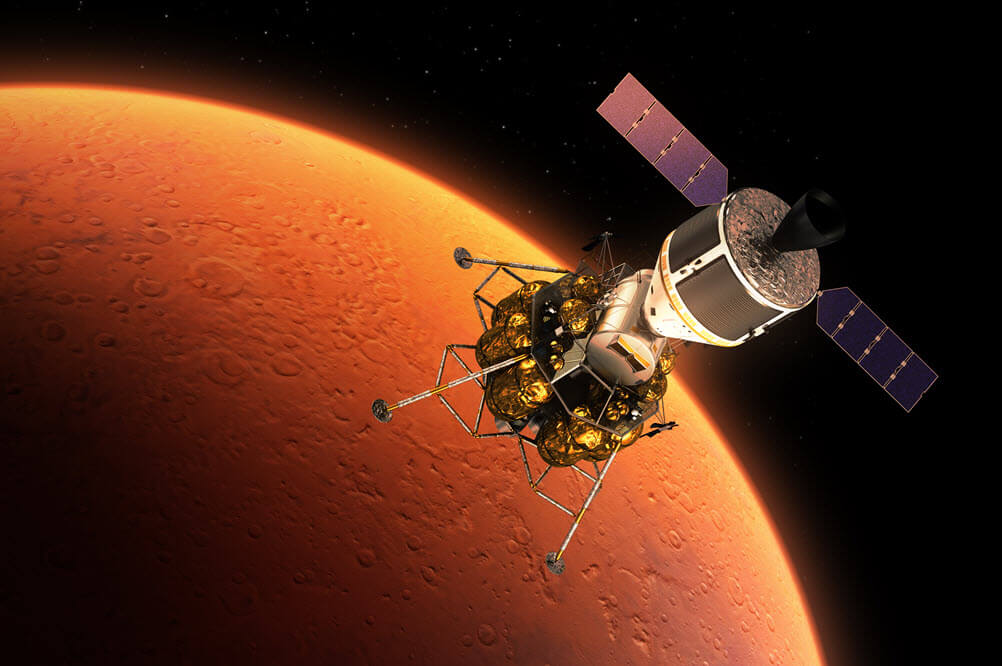Probabilistic Risk Assessment of a Planetary Exploration Mission

In this training model, a hypothetical NASA planetary exploration mission was simulated. The Model simulates all of the major components of the mission as it progresses through its phases: launch, interplanetary cruise, orbit insertion, landing, and exploration. The model simulates failure modes for the various mission components along with dynamic behavior such as consumption of propellant for attitude control and the effects of solar flares. The model illustrates the versatility of the simulation approach for evaluating systems that traditionally might use a fault-tree methodology.
As an example of the level of dynamic detail in the model, a subsystem of the model simulates the orbital insertion process, with a variable degree of consumption of the propellant for the main chemical braking rocket and for the attitude control system. If orbit is successfully achieved, the model moves on to simulate the entry of the lander system into the planet's atmosphere and its descent to the surface.

Learn More
Development of a Dynamic Simulation Approach to Mission Risk and Reliability Analysis
A Dynamic Simulation Approach to Reliability Modeling and Risk Assessment Using GoldSim
